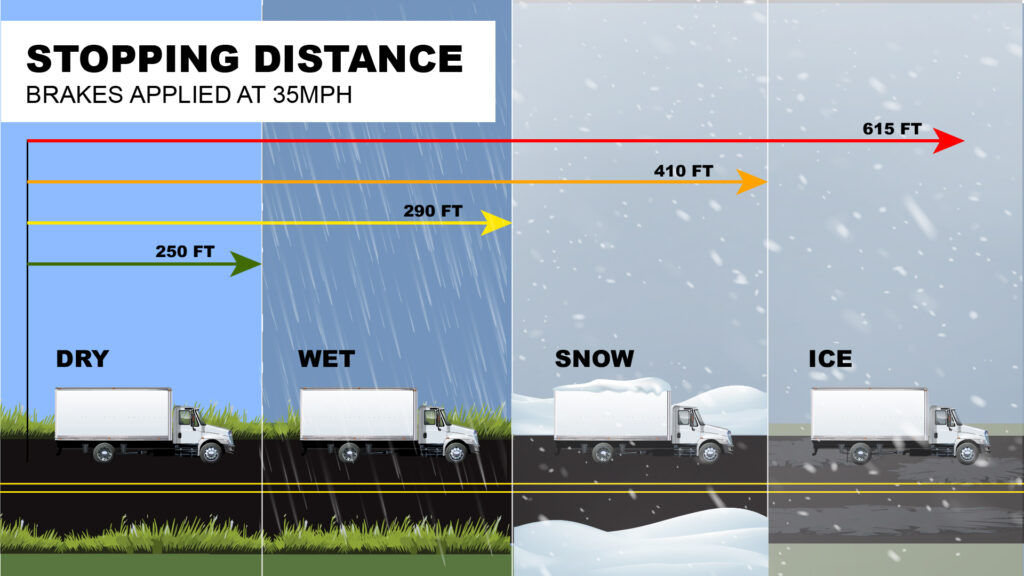Winter Safety Tips for Truck Drivers
Embarking on the journey of winter trucking demands more than just navigating icy roads; it requires a commitment to safety and the well-being of our valued truckers. At Tri-State Hazmat, we recognize the unique challenges that winter conditions bring, and it’s our steadfast commitment to ensuring the safety and success of our drivers. From top-rated safety tips to the best winter driving practices, our dedication to providing the tools and knowledge needed for a secure journey is unwavering. Join us as we delve into a series of insightful tips, each crafted with your safety in mind, empowering you to navigate the winter roads with confidence and expertise. Your success is our priority at Tri-State Hazmat, where every journey is a partnership toward a safer and more prosperous future.
Keep a Clear View
Ensuring a clear view while driving in winter is paramount for the safety of truckers. Best practices dictate that truck drivers should employ top-rated techniques to maintain visibility, such as using high-quality wipers and adopting the best winter driving safety practices. Navigating through icy conditions requires the best defensive driving strategies, which include keeping windows clear and being aware of surroundings. By implementing these best methods for avoiding hazards on winter roads, truckers can confidently navigate through challenging weather, making the road a safer place for all.
Stay up-to-date on weather conditions.
Staying well-informed about upcoming weather conditions is a cornerstone of safe winter trucking. Truck driver safety tips highlight the significance of utilizing tools like weather-aware driving techniques and regularly checking reliable sources for the latest updates on hazardous weather and road conditions. Trucking apps can be incredibly useful in giving you real-time updates about the weather conditions in your area. Incorporating these best practices ensures that truckers can adapt their routes and schedules based on real-time information, implementing the best defensive driving strategies to navigate through challenging weather with precision.
Pack an Emergency Bag
When it comes to winter trucking, having a well-prepared emergency bag can make all the difference in unforeseen situations. Best practices for truck driving safety emphasize the importance of including essentials like thermal blankets, non-perishable food, and a reliable flashlight in your emergency kit. These best practices for creating a winter emergency kit for long-haul drivers ensure that truckers are equipped to handle any unexpected challenges, fostering a sense of preparedness and safety on the road. Make sure your emergency bag is stocked with the best defensive driving techniques and the best winter driving safety practices, empowering you to navigate winter conditions with confidence.
Maintain Fuel Levels
Maintaining adequate fuel levels is a crucial aspect of winter trucking safety. When the winter winds are howling, roads are becoming increasingly slick, and you are battling the weather conditions for visibility, the last thing you want to do is find yourself in a scenario where you run out of fuel. Practicing a scarcity mindset can be massively beneficial to ensure you have the resources necessary to get to your destination safely. By adopting these best practices for safe trucking on frozen road surfaces, drivers can give themselves peace of mind that even if the roads become undrivable, they can keep the heat on and keep themselves safe.
Watch out for Bridges and Overpasses
Vigilance around bridges and overpasses is paramount for winter trucking safety, particularly due to the heightened risk of encountering black ice on these structures. We want to stress the importance of adopting the best defensive driving techniques when approaching these areas, ensuring a cautious and controlled approach. Implementing these best practices for safe trucking on frozen road surfaces becomes especially critical near bridges and overpasses, mitigating the potential dangers associated with icy conditions. Black ice is never fun to encounter, but when you are hauling tons and tons of pounds of freight, the need for caution becomes even more essential.

Practice Defensive Driving
In the realm of winter trucking, practicing defensive driving emerges as a paramount strategy for ensuring safety on icy roads. Snowy and uncertain roads highlight the significance of defensive driving techniques, emphasizing caution as the ultimate shield against the challenges posed by adverse weather conditions. Utilizing some of the defensive driving techniques you’ve acquired over the years is vital- for the safety of yourself and those around you. A completed haul done slowly is better than a speedy route that does not reach its destination.
Trucking Companies that Care About Driver Safety
As we conclude this exploration of winter safety tips for truck drivers, it’s evident that a commitment to driver safety is at the heart of every successful journey. At Tri-State Hazmat, our dedication goes beyond the road; it’s a promise to prioritize your well-being and equip you with the knowledge needed for a secure and prosperous career. In the realm of winter trucking, where challenges abound, our focus on top-rated safety practices underscores our commitment to providing a supportive environment for our drivers.
